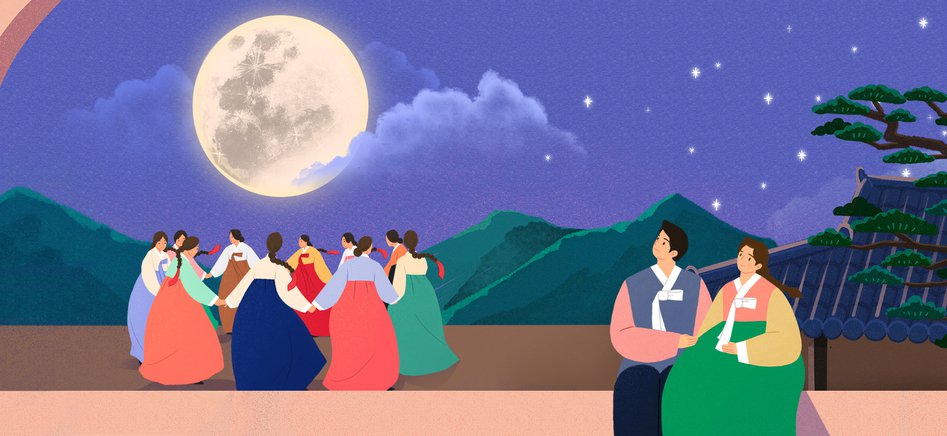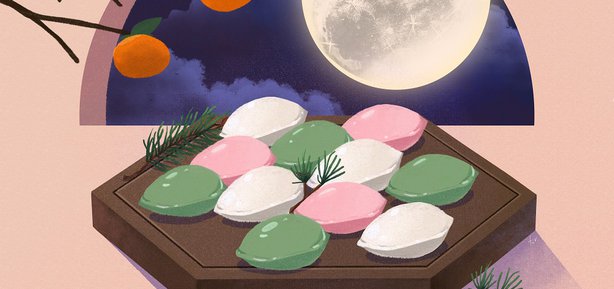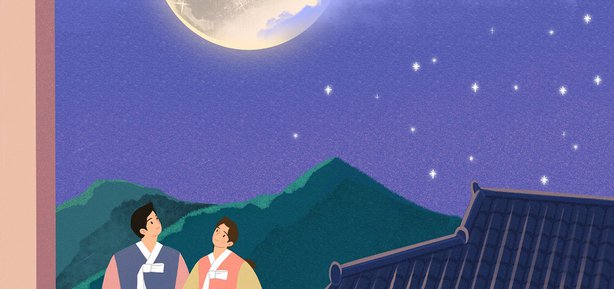
추석
Chuseok is one of the biggest and most important holidays in the Korean calendar along with Seollal (설날, Lunar New Year’s Day).
Chuseok is a celebration of harvest and abundance. For this holiday, it is customary for Koreans to visit their hometown to spend quality time with their family, gathering to share food and stories and to give thanks to ancestors. In 2021, Chuseok falls on the 21 September.
The meaning of Chuseok
Chuseok (추석) means the Full Moon Day in the eighth month or the middle of August of the lunar calendar. Chuseok is also referred to as “hangawi”. Han means big and gawi means the middle of the 8th lunar month or autumn. According to the lunar calendar, the harvest moon, the largest full moon of the year, appears on the 15th day of the eighth month.
Traditions and Customs of Chuseok
Songpyeon (송편, half-moon rice cakes)
One of the most significant foods that represent Chuseok is songpyeon. Songpyeon is prepared with rice powder that is kneaded into a half-moon shape, and then filled with sesame seeds, beans, or other nutritious ingredients. It is an old tradition for the entire family to make songpyeon together on the eve of Chuseok.
Hanbok (한복, traditional Korean clothing)
Korea’s traditional clothing, hanbok, has maintained its basic traditional features throughout Korea’s 5,000-year history while its styles and forms have evolved in various ways based on the lifestyle, social conditions, and aesthetic taste of the times. It is generally worn on special occasions or during national holidays, including Chuseok.
Charye (차례, ancestor memorial services) and Seongmyo (성묘, visit to family graves)
In the morning of the day of Chuseok, family members gather at their homes to hold memorial services called Charye (차례) in honour of their ancestors. During Chuseok’s charye, freshly harvested rice, alcohol, and songpyeon are prepared as an offering to the family’s ancestors. After the service, family members sit down together at the table to enjoy delicious food.
Another traditional custom of Chuseok is seongmyo, or visit to the ancestral graves. Seongmyo is an old tradition that is still carried out to show respect and appreciation for family ancestors. During seongmyo, family members remove weeds that have grown around the graves and pay respect to the deceased with a simple memorial service.
Dalmaji (달맞이, Welcoming the Moon)
Dalmaji is a tradition to pray on the moon for good fortune and wishes. It is a custom rooted in the primitive worship of the moon, as a protector of farming, production, and reproduction. In the past, people lit a torch at night and climbed a nearby hill to wait for the moon to rise. When the moon appeared, they rested the torch on the ground and joined hands to pray silently for their wishes to come true.
Ganggangsullae (강강술래, traditional Korean circle dance)
Ganggangsullae is a traditional dance, performed primarily on Chuseok. In this dance, women dressed in hanbok (traditional Korean clothing) join hands in a large circle and sing together on the night on Chuseok. Under the bright full moon, the women pray for a bountiful harvest in the year ahead or celebrate the joy of the harvest. The dance was registered as the UNESCO's intangible cultural heritage from Korea in 2009.





